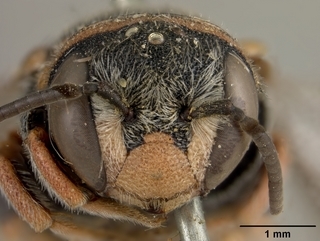
Smithsonian Institution, Entomology Department · 9
Anthidiellum ehrhorni, male, face |
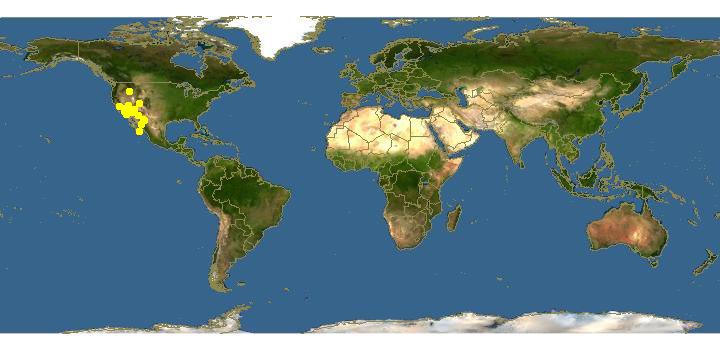
Click on map for details about points.
|
80x5 -
240x3 -
240x4 -
320x1 -
320x2 -
320x3 -
640x1 -
640x2
Set display option above.
Click on
images to enlarge. |
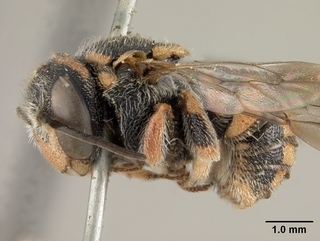
Smithsonian Institution, Entomology Department · 9
Anthidiellum ehrhorni, male, side |
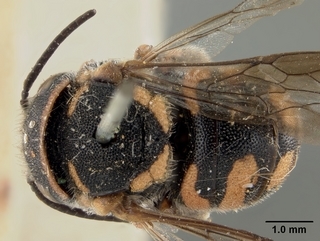
Smithsonian Institution, Entomology Department · 9
Anthidiellum ehrhorni, male, top |
|
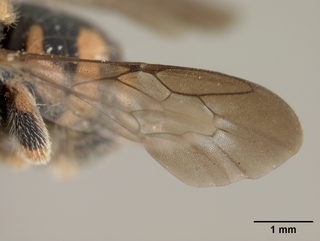
Smithsonian Institution, Entomology Department · 9
Anthidiellum ehrhorni, male, wing |
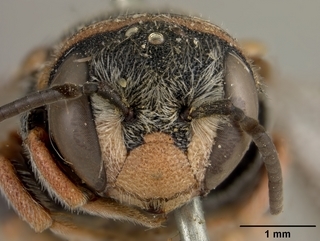
Smithsonian Institution, Entomology Department · 9
Anthidiellum ehrhorni, male, face |
|
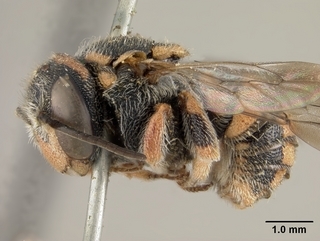
Smithsonian Institution, Entomology Department · 9
Anthidiellum ehrhorni, male, side |
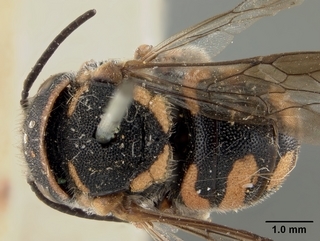
Smithsonian Institution, Entomology Department · 9
Anthidiellum ehrhorni, male, top |
|
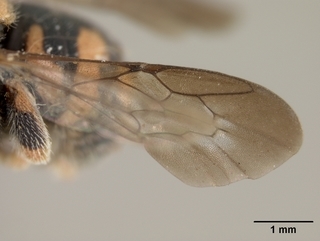
Smithsonian Institution, Entomology Department · 9
Anthidiellum ehrhorni, male, wing |
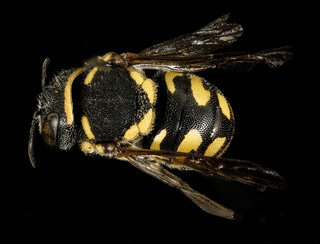
© Copyright source/photographer
· 5
Anthidiellum ehrhorni, f, back, Cochise Co. AZ |
|
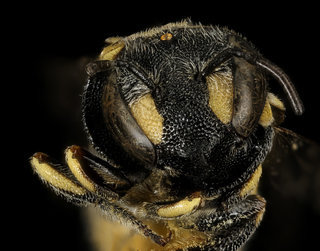
© Copyright source/photographer
· 5
Anthidiellum ehrhorni, f, face, Cochise Co. AZ |
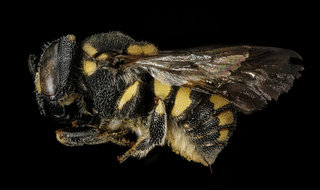
© Copyright source/photographer
· 5
Anthidiellum ehrhorni, f, left side, Cochise Co. AZ |
|
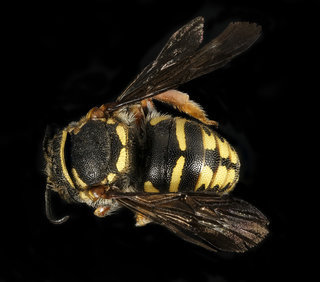
© Copyright source/photographer
· 5
Anthidiellum ehrhorni, m, back, Cochise Co. AZ |
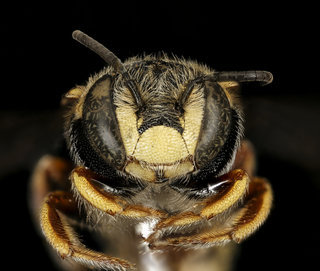
© Copyright source/photographer
· 5
Anthidiellum ehrhorni, m, face, Cochise Co. AZ |
|
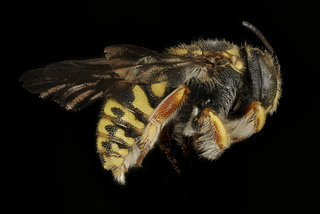
© Copyright source/photographer
· 5
Anthidiellum ehrhorni, m, right side, Cochise Co. AZ |
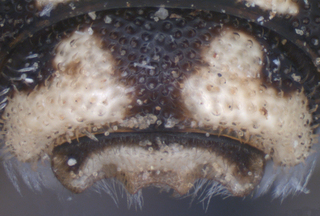
© Kimberly Huntzinger, 2007
· 1
Anthidiellum ehrhorni, male, T7, mtg |
|
Identification |
Extracted from THE POLLEN-COLLECTING BEES OF THE ANTHIDIINI OF CALIFORNIA (Hymenoptera: Megachilidae) by Grigarick A., A. (1968).
This species is marked with a pale cream to bright yellow pattern on black. The extent of this pattern shows considerable variation. A. ehrhorni is readily distinguished from notatum in the male by having tergum VII (fig. 209) with two lateral lobes and two median, fingerlike projections, and the female by having a clypeus (fig. 210) with the apical margin slanted obliquely from the head. The general body size and wingspan of ehrhorni is somewhat smaller than notatum. A. ehrhorni was collected much less frequently than notatum; only 60 males and 39 females were observed in the course of this study, with but 10 of them having been collected in northern California. The species exhibits a rather extensive but somewhat discontinuous distribution in California. It has not been found in the Great Valley, higher Sierra Nevada elevations or the uppermost north Coast Range. The survey records show plant visitations to members of 13 genera in 6 families, with about one-half of the genera belonging to the Compositae.
Nests of this species were observed from Antioch, Contra Costa County and Furnace Creek, Inyo County. Both of these nests were constructed of resin without mineral material. They were single cells that were built on a twig of about their own diameter and were formed at an oblique angle to the twig. A female had chewed anterolateral^ from each cell. The cell from Furnace Creek was dull, the resin was somewhat coarse, and a fingerlike projection was located at the top (fig. 227). The nest from Antioch was somewhat shiny and without an apical projection. Schwarz (1928) examined a nest of ehrhorni from Arizona and noted its similarities to two nests of Anthidiellum notatum rufimaculatum. Both nests of notatum were figured in the publication.
|
|
|
Names | |
|
|
| Supported by | |
Updated: 2024-07-27 01:10:46 gmt
|